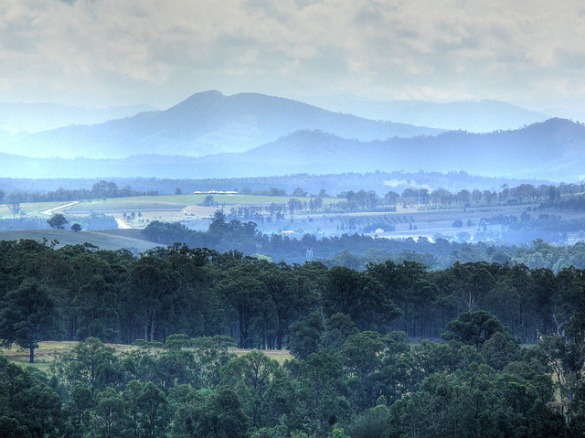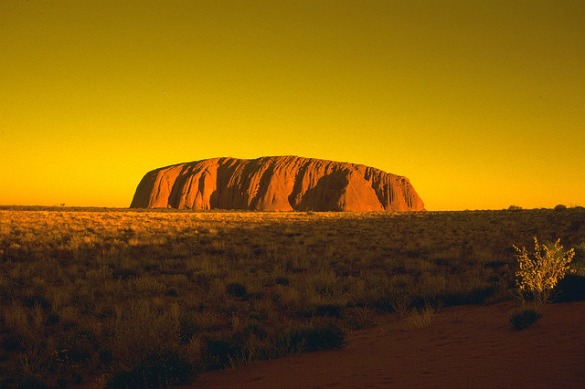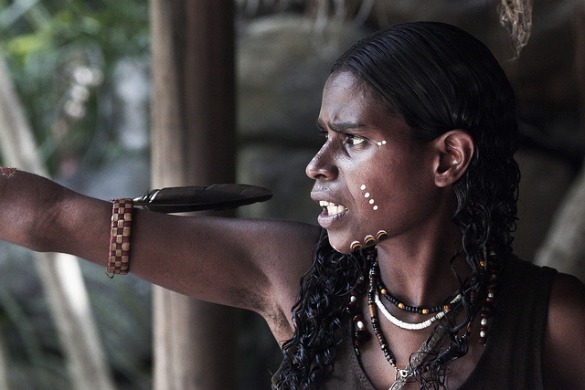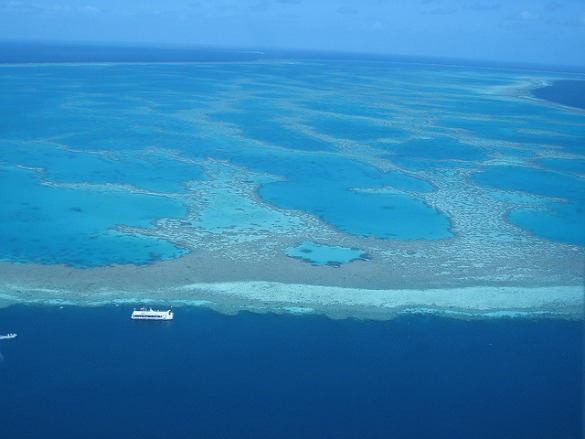You can easily spend your trip to Australia hitting the beach, playing pokies and day drinking. If you truly want to see all the country has to offer, get out of the city and the backpacker bars and explore the rural areas, the wildlife and the origins of the land Down Under.
Get outside the city
Sydney and Melbourne are cities well-worth visiting. To really see “Australia” though, go a few hours outside these urban centers. Sydney’s Blue Mountains, which are actually rather green, offer wide views of the precipitous landscape, waterfalls, rainforests and Aboriginal rock carvings. Top sites include the Three Sisters formation, named from Aboriginal lore, and Wentworth Falls. On your way back from the Blue Mountains, you can also stop by Euroka campground, where you can see Eastern grey kangaroos in the wild.
Other less urban sightseeing options near Sydney include the Hunter Valley and Southern Highlands wine regions, two hours north and south of the city, respectively. The Central Coast, a 1.5-hour drive northwest of the City, provides opportunities for fishing, hiking through rainforests and picnicking, while the closer Ku-ring-gai Chase National Park, a National Heritage List site, holds hidden beaches like Resolute, heath lands and Aboriginal heritage. Royal National Park, an hour south of Sydney, is another Heritage List site and the world’s second oldest national park. Visitors can kayak, hike, cycle or fish.
In Victoria, you can drive two hours outside Melbourne to see the Great Ocean Road, which deposits you along various seaside lookout points and landmark formations, such as the 12 Apostles. Along the road opposite the ocean lies the Kennett River, home to actual wild koalas often seen sleeping themselves in the trees. Another spot outside Melbourne in which to see animals in their native habitat is Phillip Island, which protects the world’s largest colony of Little Penguins. As night falls, you can see the penguins returning from the sea to their homes in the sand dunes in what’s called the “Penguin Parade.” You do need to pay a fee to see them.
>> Find things to do in Melbourne and search for Melbourne hotels
>> Search airfare to Sydney and discover things to do in Sydney
Hang 10 the real way
Go to Sydney’s Bondi Beach, and you won’t even be able to count the heaps surfers in the water. While a nice landmark to see, it isn’t a prime location for learning to surf, as collisions with other surfers are unavoidable and rough waters make it hard for novices to swim out on their boards.
To get a decent lesson and experience something closer to the real surfer lifestyle, head up the New South Wales coast to more rural beaches where you’ll have room in the water and a communal living experience. One school, Mojosurf, takes surf students all the way up to Byron Bay on three-, five- seven- or 12-day surf trips. The trips also run down the coast from Brisbane to Sydney. Crescent Head, about six hours north of Sydney, is one stop on the surf tour where you can curl up in hammocks outside cabins and share beers by the campfire after your day’s lessons. You’ll be without phone or Internet service, which will force you to relax.
>> Read more about beaches in Australia, including how to visit Bondi Beach
Go Outback
The Outback can be a hard place to get to, and those who want to experience it in full may need to take a few days to really get acquainted with it. It’s rural, hot and inhabitable for most plant life, but doing a camping or driving adventure can give you closer views of the arid landscape that makes up a large portion of Australia in addition to the culture of its first inhabitants.
One way to start your Outback trip is to take the desert Oodnadatta track from South Australia to the Northern Territory. If you want to see famous Ayers Rock, traveling on Red Centre Drive is a good way to get there, as you can learn about the local Aboriginal people, the Arrente, experience Uluru-Kata Tjuta National Park and visit Alice Springs along the way. The Gibb River Road takes you through Kimberley, in Western Australia, and gives access to gorges, waterfalls and rock formations.
>> Read more about the Northern Territory and what you should consider before hiking Ayers Rock
Go wild and go west
If you want to see more Australian wildlife and check out the natural wonders the country offers, head to Queensland. In Cape Tribulation, Daintree Rainforest and the Atherton Tablelands, you can see lizards big and small, crocodiles and cassowaries, powerful birds with bright blue necks. Waterfalls and the intricate strangler fig tree can also be found in these areas. For more animal fun, Fraser Island along the southern coast of Queensland has wild dingoes.
Many people don’t make it to Perth on their trip Down Under because they prefer to see the many sites along the Australian east coast. But if you can swing a visit out that way, you’ll be treated to nice beaches on which you can watch strikingly colorful sunsets. Cruise over to Rottnest Island to get a glimpse of the quokka, a marsupial only native to this area, or rent a bike and explore the many paths winding around the island.
>> Read more about Queensland and discover things to do in Perth
See Aboriginal history
If you want Aboriginal culture, go to the Northern Territory, home to Australia’s largest indigenous population. Several tours and excursions there are owned and operated by Aboriginal people, such as Ayal Aboriginal Tours and Jungala Enterprises, which give you a chance to meet local landowners and see indigenous art. You can also stay in accommodations operated by the local community, see a festival of music and dance or stop by a cultural center. Though not limited to the Northern Territory, you can also see Aboriginal rock carvings in locations throughout Kakadu National Park.
>> Read about unique place names in Australia
Get in the game and the water
Aussies love their sports, so what better way to get in with the locals than to attend a game with them? You can choose from the Australia Football League, also known as Aussie Rules, National Rugby League, Rugby Union and A-League soccer. Baseball and basketball teams also exist, though those sports aren’t as popular.
If you want to actually play sport, one Australian pastime is barefoot lawn bowls. It’s possible you’ll see mostly older folks participating in this game during the weekday, but on warmer weekend arvos, groups of all ages gather with pints to out bowl each other. Watching or betting on a horse race is also common, and if you like fishing, you’ll have no trouble finding a mate to go with you.
Water sports as a whole are beloved Down Under, and you’ll share in the affection if you kayak, wind surf or sail. A good spot to experience riding in or actually sailing a boat is the Whitsunday islands of Queensland. The Great Barrier Reef is the best-known spot for snorkeling and scuba diving, but you’ll find other good spots among the coral reefs in Western Australia and at Sydney’s Shelly beach, near Manly.
>> Read about visiting the Great Barrier Reef
Learn more about Australia:
- Australia First Time Visitors Guide
- Australia Itinerary: The Perfect Two Weeks
- 10 Reasons to Travel to Australia Now
Photos by das farbamt, monkeyc.net, Ed Yourdon, Samuel Stocker, babasteve, noaml





